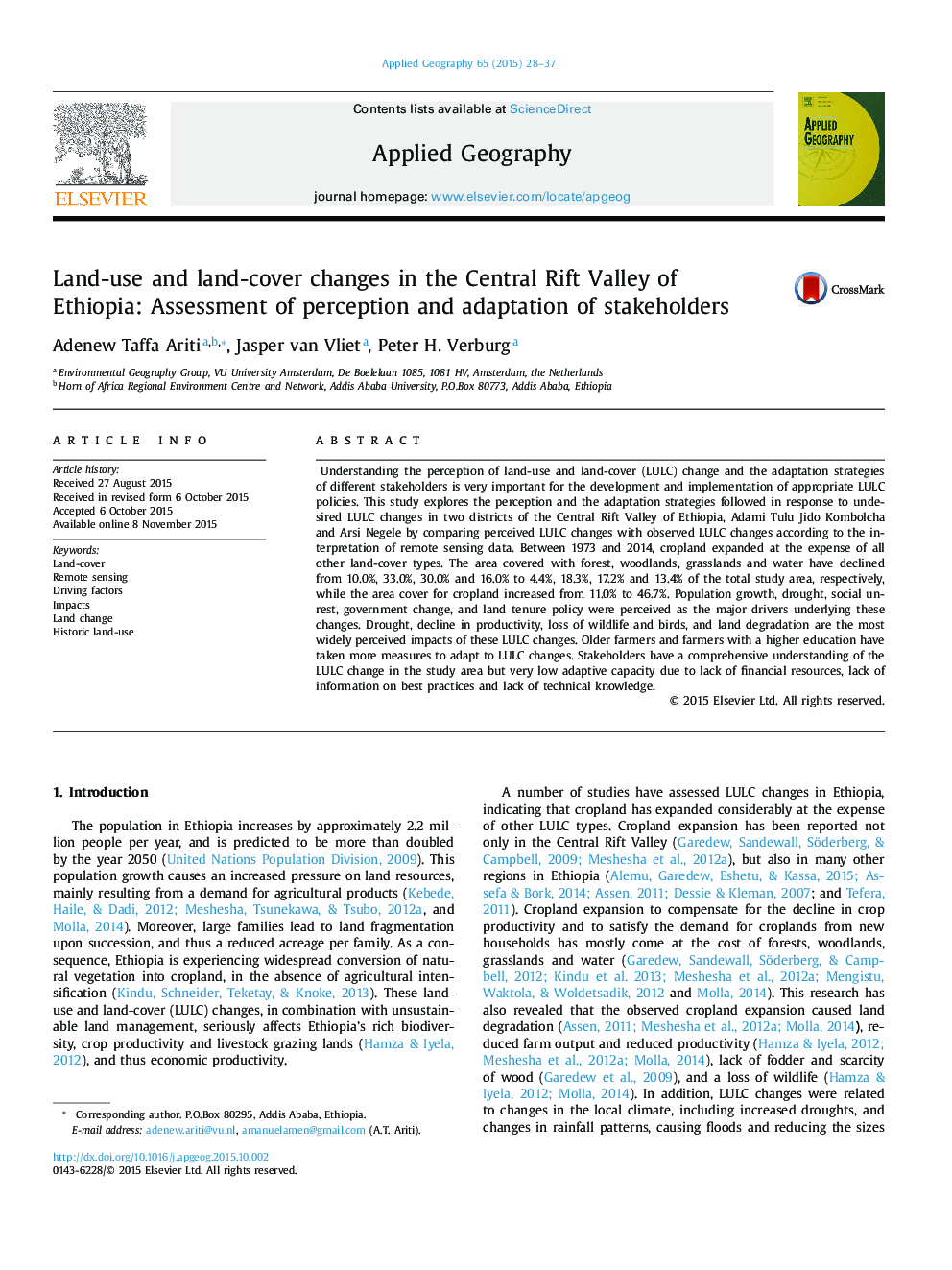| کد مقاله | کد نشریه | سال انتشار | مقاله انگلیسی | نسخه تمام متن |
|---|---|---|---|---|
| 83182 | 158694 | 2015 | 10 صفحه PDF | دانلود رایگان |
• Cropland increased during 1973–2014 at the cost of all other land uses in the Central Rift Valley.
• We compared remote sensing observations with local perceptions of past land use change.
• Farmers, businessmen and institutions have a good perception of past land use changes.
• Climate variation and land degradation are the main impacts perceived.
• There is a limited capacity to adapt to land use and land cover changes.
Understanding the perception of land-use and land-cover (LULC) change and the adaptation strategies of different stakeholders is very important for the development and implementation of appropriate LULC policies. This study explores the perception and the adaptation strategies followed in response to undesired LULC changes in two districts of the Central Rift Valley of Ethiopia, Adami Tulu Jido Kombolcha and Arsi Negele by comparing perceived LULC changes with observed LULC changes according to the interpretation of remote sensing data. Between 1973 and 2014, cropland expanded at the expense of all other land-cover types. The area covered with forest, woodlands, grasslands and water have declined from 10.0%, 33.0%, 30.0% and 16.0% to 4.4%, 18.3%, 17.2% and 13.4% of the total study area, respectively, while the area cover for cropland increased from 11.0% to 46.7%. Population growth, drought, social unrest, government change, and land tenure policy were perceived as the major drivers underlying these changes. Drought, decline in productivity, loss of wildlife and birds, and land degradation are the most widely perceived impacts of these LULC changes. Older farmers and farmers with a higher education have taken more measures to adapt to LULC changes. Stakeholders have a comprehensive understanding of the LULC change in the study area but very low adaptive capacity due to lack of financial resources, lack of information on best practices and lack of technical knowledge.
Journal: Applied Geography - Volume 65, December 2015, Pages 28–37
